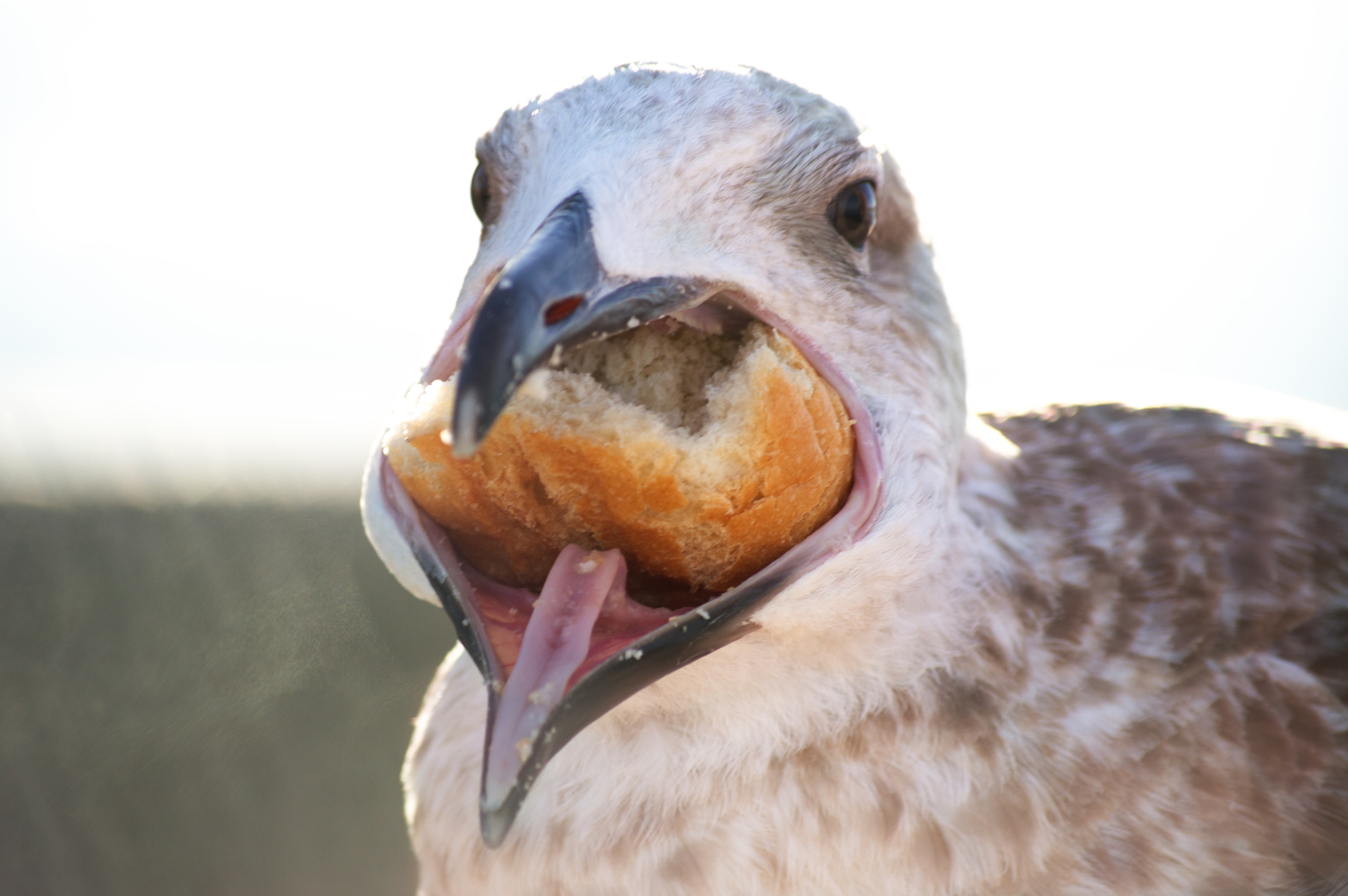Glaring At Seagulls Will Make Them Leave Your Food Alone, Experts Say

Credit to Author: Jelisa Castrodale| Date: Wed, 07 Aug 2019 20:58:55 +0000
Pep Bassett recently moved to Ocean City, New Jersey, and the local seagulls have already let him know what his life will be like from now until he re-packs his U-Haul and drives out of town. “I had a donut taken out of my hand while I was riding my bike,” he told NJ.com. “It slapped me on the side of my face, took the doughnut, and took off. We’ve seen them on the beach too, especially with people playing.”
Ocean City has a problem with these winged jerks (the gulls, not the Bassetts) and with their tendencies to steal food from people on the beach and the boardwalk. The city launched a program last weekend—one that costs $2,100 a day—which involves trained falconers flying bigger, scarier birds over the Boardwalk from 10 a.m. until 10 p.m. to humanely scare the seagulls away. The rent-a-predators are scheduled to work in shifts: Falcons will be used during the day, followed by hawks in the afternoon, and owls after dark.
That all sounds fine, but according to a couple of British researchers, the people of Ocean City could try just staring at the seagulls really hard.
Madelaine Goumas, of the Centre for Ecology and Conservation at the University of Exeter, was the lead author on a study called “Herring gulls respond to human gaze direction,” which investigated whether Herring gulls would be more or less likely to try to steal food if a human was staring right at them. Gulls, they explained are kleptoparasites, which mean that they opt to steal food or prey instead of catching it or acquiring it themselves. Instead of using lethal control methods or other birds of prey—which Goumas describes as “costly and ineffective”—she and her co-researchers decided to just… look at them.
“Gaze aversion is the tendency to show a fearful response towards being watched, characterized by avoidance or a slower approach towards a desired object or location,” the researchers wrote. “It is thought to be an adaptive anti-predator response across a range of vertebrate taxa […] We predicted that herring gulls would take longer to approach the food source when an experimenter was looking directly at them rather than looking away.”
To test this theory, she and her team put a carton of French fries inside a clear plastic bag, placed it on the ground, and then waited for the gulls. (The fries were sealed inside the bag so that any gull who actually went for them wouldn’t be rewarded for being a thieving a-hole.) They tried to monitor the behavior of 74 gulls, but most of them wouldn’t participate. Twenty-seven birds approached the food, and 19 of them stuck around long enough for the researchers to look directly at them and to look away as they inched toward the fries.
On average, the gulls took 21 seconds longer to approach the fries when they were being watched than they did when the researcher was deliberately looking elsewhere. “Gulls are often seen as aggressive and willing to take food from humans, so it was interesting to find that most wouldn’t even come near during our tests,” Goumas said. “Of those that did approach, most took longer when they were being watched. Some wouldn’t even touch the food at all, although others didn’t seem to notice that a human was staring at them.”
Despite the small sample size, they still concluded that the gulls “find human gaze aversive” (relatable) and suggested that the birds could change their behaviors based on what nearby humans might be doing. As a result, they suggest that if beachgoers keep an eye out for—and an eye on—approaching gulls, it might be enough to deter them from stealing food.
At the very least, it sounds easier than training an owl.
This article originally appeared on VICE US.